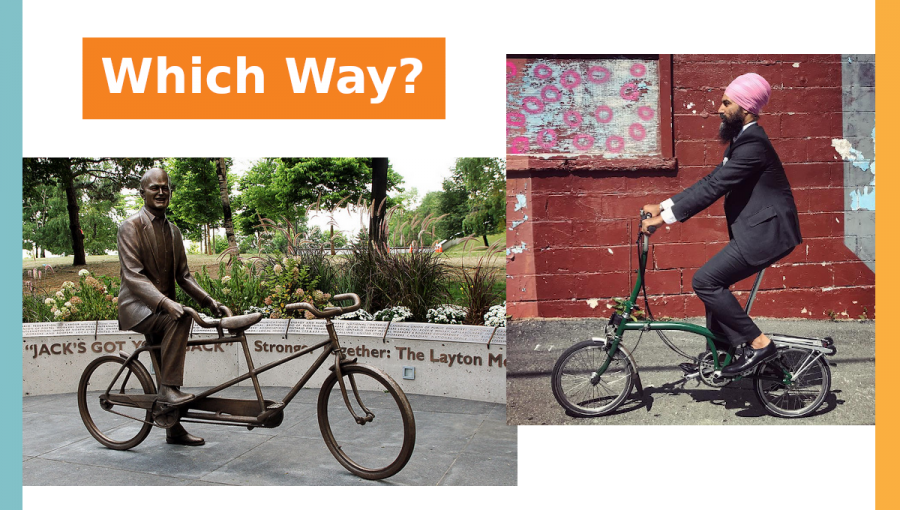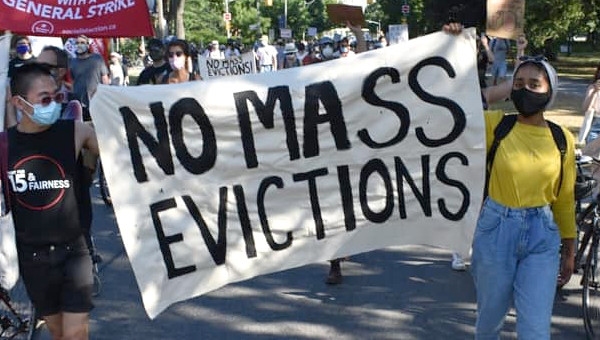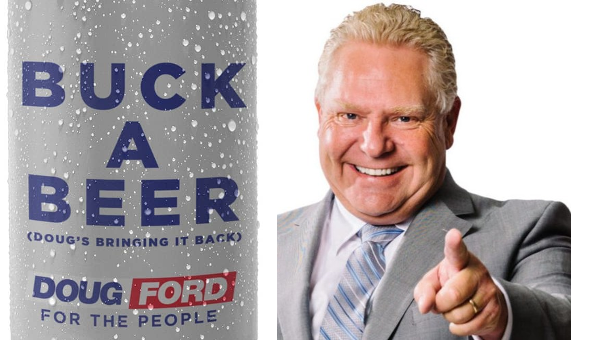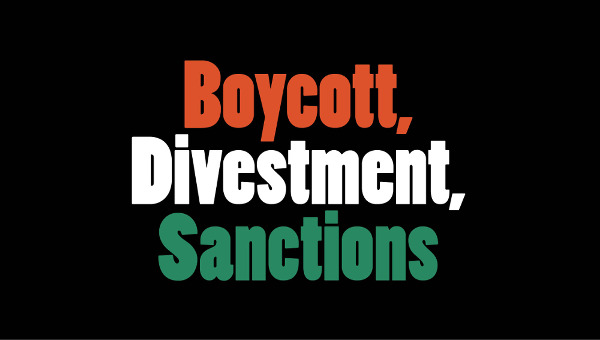Layton’s Legacy and the NDP Leadership Race
With the death of Jack Layton, the federal New Democratic Party (NDP) has been thrust into an unexpected leadership race, its future in question.
Layton led the NDP to a historic breakthrough in Quebec and brought the NDP to Official Opposition status for the first time. Even with Layton, the NDP’s hold on these heights was tenuous. Without him, the NDP faces an immense challenge to maintain its current strength, let alone take that desired next step of forming a federal government. Electorally, at least, much hangs on the outcome of this leadership race.
Using a one-member-one-vote (OMOV) system, the NDP will choose its new leader next March 24. While looking forward to the leadership race, it’s also useful to consider the legacy of Layton’s tenure as leader.
Layton’s Legacy: Modernization and Moderation
Beyond the Quebec-led electoral breakthrough, Layton’s legacy for the NDP has two main aspects. He modernized and professionalized the federal NDP and he shifted it toward the centre of the political spectrum. These developments certainly helped the NDP achieve the electoral breakthrough of 2011. But the legacy of all this for left politics in Canada is much more ambiguous.
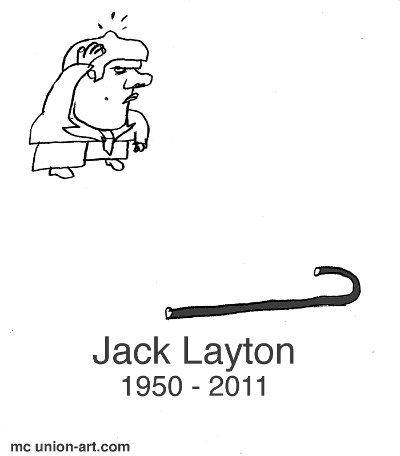 Layton was elected leader of the NDP in January 2003 through a modified OMOV system used for the first time by the federal party (the votes of affiliated trade unions were weighted as 25 per cent of the total). Throughout that leadership campaign, Layton, a former Toronto city councillor, was frequently portrayed as an outsider in a field that included three sitting MPs (Bill Blaikie, Lorne Nystrom and Joe Comartin). Furthermore, Layton was often depicted, particularly by the mass media, as someone who would push the party to the left, away from the moderate leadership of Alexa McDonough.
Layton was elected leader of the NDP in January 2003 through a modified OMOV system used for the first time by the federal party (the votes of affiliated trade unions were weighted as 25 per cent of the total). Throughout that leadership campaign, Layton, a former Toronto city councillor, was frequently portrayed as an outsider in a field that included three sitting MPs (Bill Blaikie, Lorne Nystrom and Joe Comartin). Furthermore, Layton was often depicted, particularly by the mass media, as someone who would push the party to the left, away from the moderate leadership of Alexa McDonough.
That analysis was wrong at the time and the signs were there for anyone who dared to look, but it became much clearer over time as Layton pushed the NDP toward the middle of the political spectrum, not to the left. Layton had certainly received the support of many on the left within the NDP, including many of the leaders and supporters of the New Politics Initiative (NPI), which had, at the 2001 NDP convention, advocated the refounding of the NDP as a more participatory and activist party. However, Layton consciously and explicitly constructed a diverse range of endorsers of his candidacy, including some who had led the charge against the NPI, such as former federal NDP leader Ed Broadbent. Broadbent’s support for Layton was a significant coup for the Layton campaign, but it was merely the most visible example of his significant support in the party establishment.
Layton did not present himself as a left candidate or endorse a left platform. In retrospect, Layton’s leadership bid in 2003 was typified by a now familiar blend of sunny optimism, boundless energy and dogged determination. One of Layton’s main selling points was his ability to generate media attention. All of this was more central than any particular political agenda. Even in 2003, his economic and employment agenda amounted to little more than the retrofitting of buildings for energy efficiency and frequent references to one solitary windmill on the Toronto waterfront.
During the leadership campaign, moderate New Democrats quickly learned that they had little to fear from Layton’s campaign. In fact, the promise of a bilingual, media-savvy leader was highly appealing. A better messenger was on offer, not a different message. More than that, the Layton campaign was a modern, sophisticated, well-run machine, the kind necessary to win a OMOV contest and boding well for a general election. Not insignificantly, Layton was able to raise the most funds. According to the financial reports released during the campaign, Layton raised significantly more money than the other five candidates combined.
Layton achieved a decisive, first-ballot victory in 2003. In doing so, he set the template for his tenure as leader. Layton, above all else, was a social democratic modernizer. He successfully modernized and professionalized the federal NDP to an extent never seen before. Layton strengthened and centralized the party’s communications capacities and the NDP fully embraced the polling and marketing aspects of modern electoral campaigns. He imposed a degree of message discipline upon the party previously unattainable. Along with his own personal fluency in French and focus on Quebec, he also brought crucial francophone staff into the federal NDP.
Layton’s efforts to modernize the federal party were driven by and aided by the changing party finance regulations (passed in 2003 and 2006) which banned union (and business) donations to parties and also required the separation of the federal and provincial parties.
The major provincial sections of the party had long been major power brokers in the federal party to the neglect of the development of a distinct federal organization. The labour movement was both a source of funds and another power bloc (with its own significant internal divisions) in the federal NDP. With the diminished influence and leverage wielded by the provincial sections and the labour leadership, the federal NDP (and its federal riding associations) gained institutional strength and growing independence under Layton’s leadership. At the same time, the party gained access to the new state subsidies for political parties. While the public subsidies are currently being phased out by the Harper government, the NDP, at least for now, has unprecedented financial resources. With its financial resources, the NDP was able to run increasingly sophisticated electoral campaigns with the advertising, polling, message-testing and vote-tracking to compete with the other parties.
The transformation of the federal NDP was also shaped by the move toward OMOV. Now the leader would have a mandate from the broad party membership, with a relative marginalization of the federal caucus, the powerful provincial wings, unions and local party activists.
Packaging the NDP
Firmly in control of the party, Layton was able to moderate, simplify and carefully package the NDP message. He simply ditched many controversial policies. During the 2004 election, he single-handedly dismissed the NDP’s longstanding support for pulling Canada out of NATO. With each campaign, Layton would focus on a small number of modest reforms. Increasingly, the NDP would speak for “middle-class” Canadians. By the 2011 election, the NDP was proposing to reduce the small business tax to reward “job creators.” Certainly, the 2011 platform was a more moderate program than anything ever offered under any previous federal NDP leader. It became harder and harder for the mass media to depict the NDP as the socialist hordes.
Layton not only sought to transform the NDP’s electoral rhetoric. He began the process of amending the party’s constitutional preamble with its reference to “democratic socialist principles.” A proposed new preamble was up for discussion at the 2011 federal convention. Ultimately, the preamble was referred back to the party executive for further discussion and consultation. Meanwhile, the old preamble, which has not actually been officially replaced or modified, has simply disappeared from the constitution currently posted on the party website. The modernization process continues.
Another notable feature of the Layton years was his positioning of the NDP as a party of government. This involved working with the government or cooperating with the other political parties. Most notable, of course, were the 2005 Liberal minority government budget that was influenced by the NDP and the proposed 2008 governing coalition with the Liberals that would also have received the support of the Bloc Québécois. While tactically useful for the NDP, these steps were programmatically incoherent.
Layton managed to successfully moderate the NDP to such an extent because he didn’t face much internal opposition. During the 2003 leadership race and ever since, he has managed to co-opt the left within the NDP. In part this is due to his own personal political history and political network. Through his years as a city councillor in Toronto, Layton developed personal ties to and credibility with many groups of activists, including environmentalists, feminists, queer activists and anti-poverty activists. At the same time, there is very little organized left presence within the NDP. Unions, which prevented Alexa McDonough from moving the party to the centre in 1999, are in disarray. For example, the Canadian Auto Workers now regularly endorses Liberals.
In recent years, Layton, in essence, became the party. The 2011 NDP campaign was arguably even more focused on the party leader than the 1988 election which tried to capitalize on the personal popularity of Ed Broadbent. While the context is very different, today, the NDP risks another collapse like the one that occurred after Broadbent was replaced (though certainly other factors were involved in the 1990s). If your selling points are reduced to a leader’s personality and image, you may be in serious trouble with a different leader.
All in all, it could be said that Layton managed to get the NDP to face up to its own identity as an electoral party of the centre-left. He turned the NDP into a more capable, more professional, and more sophisticated electoral machine. If that is the extent of the NDP’s role, it might as well play that role well. However, the result is a party that is less democratic, more centralized and more autocratic.
The Leadership Race
Layton’s legacy sets the stage for the current NDP leadership race. The NDP’s new role as Official Opposition and its new support in Quebec certainly change the dynamic of the leadership contest. As well, for the first time, the federal NDP leader will also be chosen by a pure OMOV system. Although there has recently been confusion in the media, it was back in 2006 that the NDP removed the provision that gave affiliated unions a portion of the vote for party leader.
There are some obvious implications of the Layton legacy. The breakthrough in Quebec means that bilingualism is a prerequisite like never before and there will certainly be at least one major challenger from Quebec. At minimum, there will be pressure to find a candidate who can sustain the breakthrough in Quebec. At the same time, for the NDP to win a federal election they will have to generate an “orange wave” outside of Quebec. In 2011 they only gained eight seats outside of Quebec compared to their results in 2008. In Ontario, the NDP received only slightly more votes than the Liberals and they were both well back of the Conservatives. In BC, Saskatchewan and Manitoba, the NDP’s results were better than the electoral hard times of the 1990s, but still did not rebound to the historic high points of the 60s, 70s and 80s. Building on a pan-Canadian level remains a major challenge. The regional issue is further complicated by the fact that the NDP has very few grassroots members in Quebec, despite the dominance of Quebec MPs in the parliamentary caucus. Unless there is a massive increase in membership in Quebec, Quebec has a very weak voice via OMOV.
The newfound prominence of the NDP means that the leadership race and the individual contenders will face greater media attention and scrutiny than usual. The leadership has also become a more significant and desirable position. For once, the NDP leadership race involves picking the leader of the Official Opposition, not the leader of the third (or fourth) party.
The most comparable past NDP leadership race is that of 1989, when the party chose a successor to Broadbent. It attracted a large field of seven candidates that included five MPs and a former BC premier, Dave Barrett. Even then, much attention focused on prominent New Democrats who chose not to run, including Stephen Lewis, Bob Rae and Bob White. As in 1989, it is possible that a number of MPs may throw their hats into the ring. The relative attractiveness of the leadership position could draw a crowd. Many MPs appear to be weighing their options. In contrast, only three candidates were on the ballot at the 1995 NDP leadership convention.
A significant barrier, however, may be money. OMOV campaigns are expensive. Rather than organizing for delegate selection meetings and campaigning among and tracking some 2000 delegates, leadership campaigns in a OMOV contest must reach out to many tens of thousands of party members. It is no coincidence that competitive multi-candidate campaigns have become increasingly uncommon in major Canadian parties that use a OMOV system.
The NDP leadership race will be the first real leadership race by a major political party to be held under the current federal party finance rules (the Liberal coronation of Michael Ignatieff hardly counts). Since 2007, an individual can donate only a maximum of $1100 per leadership contest to one leadership candidate or divided among leadership candidates. Unions and corporations are prevented from donating to leadership candidates. A serious candidate will need to be able to raise funds through many relatively small donations of a maximum of $1100 each.
Federal electoral laws do not impose any spending limits on leadership contests, which are left to the parties themselves to regulate if they so choose. The NDP’s Federal Council has decided to maintain the spending limit for this leadership race at the same level as last time, $500,000. However, the non-refundable entry fee is $15,000, which is twice as much as last time. While these dollar figures might leave J.S. Woodsworth spinning in his grave, they’re chump change compared to recent Canadian experience (Ignatieff spent over $850,000 when he won the Liberal leadership in 2009 and over $2.3-million on his failed 2006 bid, while Harper spent over $2-million to win the Conservative leadership in 2004).
Surveying the Field: Little Room for Optimism
With the field not set, a full analysis of the contenders will have to wait. For now, we can make a few observations. The only declared candidates at this point are Brian Topp and Romeo Saganash. A former campaign director for the federal NDP and deputy chief of staff to Saskatchewan premier Roy Romanow in the 1990s, Topp is very well connected within the party, but has never stood for public office (for more, see my review of his recent book). Saganash, a prominent Cree leader, was elected as an MP in the 2011 election. Widely expected to run is Thomas Mulcair, the MP for Outremont and former Environment minister in the Quebec Liberal cabinet of Jean Charest.
The names of many other MPs have been mentioned as potential candidates including Libby Davies, Paul Dewar, Peter Julian, Peggy Nash, Nathan Cullen, Robert Chisholm and Niki Ashton. Pat Martin has suggested that the party needs someone to run under the banner of cooperating with the Liberals and that he will do so if no one else does. Françoise Boivin was seen as a potential candidate until she endorsed Topp. Some MPs have said they won’t run, most notably Olivia Chow, Charlie Angus, Joe Comartin, Megan Leslie, and Peter Stoffer.
The leader doesn’t necessarily have to be an MP. The last two NDP leaders, Layton and McDonough, had never been MPs before being selected as leader. Layton had failed in his previous two bids for a federal seat. He also lost a bid to become Toronto mayor in 1991. McDonough had also failed twice to get elected to the House of Commons in 1979 and 1980. She had, however, served as the leader of the Nova Scotia NDP and a provincial MLA for 14 years. Along with Brian Topp, there may be other leadership candidates who don’t sit in the federal caucus. However, both Gary Doer and David Miller have said they’re not running. It should be noted that leadership candidates have until January 24 to join the race, so some who have said no may be encouraged to change their minds.
There is no obvious left candidate. In the past, there has consistently been a candidate perceived as on the left of the party, from Waffle candidate James Laxer in 1971, through Rosemary Brown (1975), Steven Langdon (1989), Svend Robinson (1995) to Joe Comartin (2003). Libby Davies, the MP for Vancouver East, has been a consistent voice on the left of the NDP, and her name has frequently been mentioned as a potential candidate. However, she is hindered by her lack of French language skills.
In the last leadership race, the Socialist Caucus ran a candidate, Bev Meslo. Will the Socialist Caucus be able to run a candidate this time, with the higher entry fee of $15 000? Established figures in the party certainly hope not. Socialist Caucus leader Barry Weisleder recently had his candidacy for the Ontario provincial election rejected after he won the nomination in the riding of Thornhill. While continuing to be a thorn in the side of the party establishment, the Socialist Caucus has remained a rather marginal force within the NDP. Meslo, for example, finished a distant last in the 2003 race. There doesn’t appear to be any radical candidate who can make a serious effort at winning the leadership. At best, a left candidate, should one emerge, could raise some issues and possibly push the political debate and rhetoric to the left.
What Next for the NDP?
Along with replacing Layton, there is much talk of choosing a leader who can defeat Harper and become Prime Minister. From the NDP’s perspective the minimum goal, and perhaps the major focus, is to maintain the NDP’s position as the Official Opposition. The NDP’s ascent to Official Opposition had much to do with the longstanding weaknesses and short-term blunders of the Liberal Party. Not knowing who will lead the Liberal Party in the near future or whether the Liberals will be able to reinvent themselves adds another layer of intrigue to the NDP’s search for a leader.
The vast outpouring of emotions that followed Layton’s tragic passing was a notable phenomenon. There is some truth to the cynical view that people fell for the celebrity aspect of the spectacle. Yet many clearly longed to participate in a meaningful community event larger than themselves. Even more telling was that significant numbers were moved by broadly social democratic values. At minimum, we were reminded that there is a mass base for something other than neoliberalism.
The electoral forecast for the NDP is impossible to predict. It is clear, however, that the NDP has chosen its future direction. The die is cast. It will continue onward as a moderate centre-left electoral party attempting to displace the Liberals. Those to the left of the NDP are still faced with the challenge of recognizing the NDP for what it is, working with and supporting it where beneficial, while building alternative movements with radical programs and grassroots activism. •
This article first appeared on the New Socialist Webzine.


